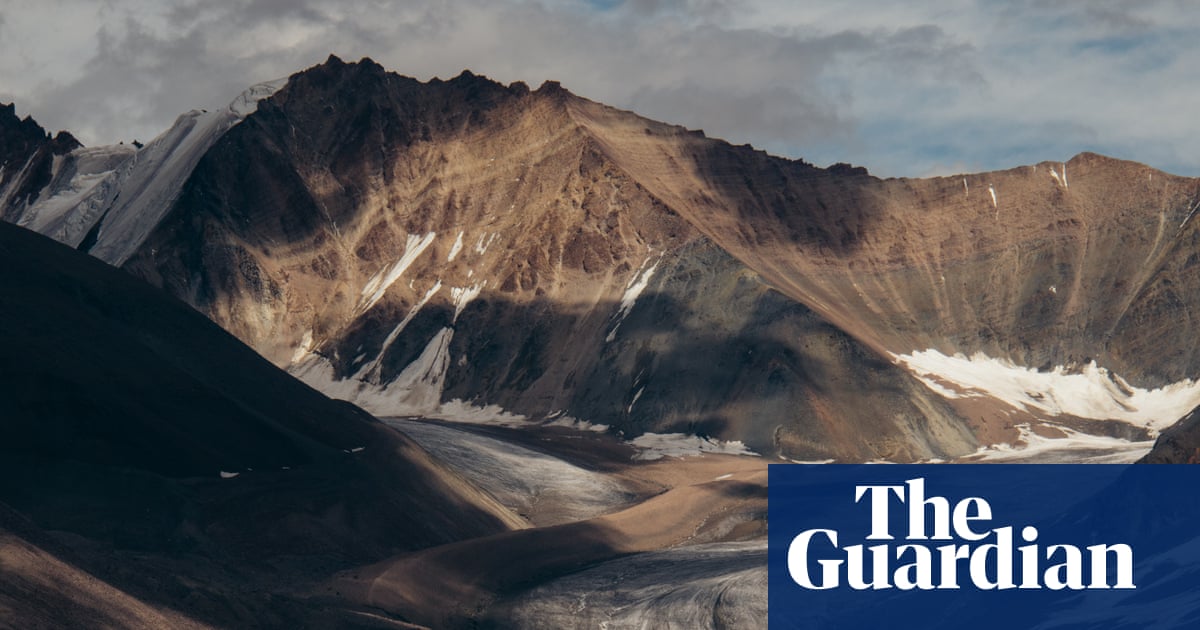Almost 40% of glaciers in existence today are already doomed to melt due to climate-heating emissions from fossil fuels, a study has found.
The loss will soar to 75% if global heating reaches the 2.7C rise for which the world is currently on track.
The massive loss of glaciers would push up sea levels, endangering millions of people anddriving mass migration, profoundly affecting the billions reliant on glaciers to regulate the water used to grow food, the researchers said.
However, slashing carbon emissions and limiting heating to the internationally agreed 1.5C target would save half of glacier ice. That goal is lookingincreasingly out of reachas emissions continue to rise, but the scientists said that every tenth-of-a-degree rise that was avoided would save 2.7tn tonnes of ice.
Glaciers in the western US and Canada were severely affected, the study found, with 75% already doomed to melt. Those in the high, cold mountains of the Hindu Kush and Karakoram ranges are more resilient but will still shrink significantly as global temperatures rise.
Unlike previous studies, the research uses multiple models of glaciers to examine their fate well beyond the end of the century. About 20% of glaciers were already known to be doomed to melt by 2100, but the longer term view revealed that the total glacier loss that is already inevitable is 39%.
As well as sea level rise, glacier loss will increase ice lake collapses that devastate downstream communities and the loss of wild ecosystems, while regions dependent on glacier tourism will also suffer.
“Our study makes it painfully clear that every fraction of a degree matters,” said Dr Harry Zekollari at the Vrije Universiteit Brussel in Belgium, who co-led the research. “The choices we make today will resonate for centuries, determining how much of our glaciers can be preserved.”
Dr Lilian Schuster, at the University of Innsbruck, Austria, and co-lead author, said: “Glaciers are good indicators of climate change because their retreat allows us to see with our own eyes how climate is changing. However, since they adjust over longer timescales, the situation for glaciers is actually far worse than visible in the mountains today.”
Schuster added that it was “not too late to act now, because this study shows every tenth of a degree less of global warming matters”, potentially reducing the human suffering caused by glacier loss. “We hope the message gives people some hope that we can still do something.”
The baseline year for the analysis was 2020, but glaciers had already lost huge amounts of ice before this due to global heating over the last century. Quantifying this loss is difficult, however, due to the scarcity of historical data. “Glaciers were way bigger [in 1850] than they are today,” said Zekollari.
The study,published in the journal Science, used eight different glacier models, each calibrated using real-world observations. These estimated the ice loss of the world’s 200,000 glaciers outside Greenland and Antarctica under a range of global temperature scenarios, with that temperature remaining constant for thousands of years.
The researchers acknowledged significant uncertainties in the models but said glaciers are certain to lose significant ice and this could be a lot higher than the average estimate. For example, the average prediction that 40% of glaciers are doomed at today’s level of global heating could be as high as 55% in the worst case.
Sign up toDown to Earth
The planet's most important stories. Get all the week's environment news - the good, the bad and the essential
after newsletter promotion
The proportion of doomed glaciers varies widely around the world, with 80% of glaciers in the southern part of Arctic Canada already destined to melt, while only 5% of the glaciers in the western part of the Hindu Kush-Karakoram-Himalaya mountain chain are currently consigned to history.
The situation is grim at 2.7C of global heating: all but seven of the 19 major glacier regions of the world eventually lose at least 80% of glaciers, from central Europe to the eastern Himalaya chain. Glaciers would vanish from the Russian Arctic, the western US and Iceland.
Glaciers currently contribute about a quarter of sea level rise and those already doomed will lead to another 11cm. If global heating reaches 2.7C, it will result in 23cm of sea level rise from glaciers alone. Limiting global heating to 1.5C limits reduces that to 14cm.
Prof Andrew Shepherd, at Northumbria University in the UK, said the study brought together all of the glacier model projections into a single assessment. “Glaciers are the most iconic example of the impacts of climate change, and they are in all corners of our planet,” he said.
“This study shows that glacier melting will continue for centuries, even if climate warming stops today, and that’s a sobering thought – dramatic changes will take place in our lifetimes. Our mountain landscapes will be unrecognisable if we continue to burn fossil fuels as we are today.”
Glaciers could seem remote, said Zekollari, but their loss mattered to everyone. “Everything is connected. If you drive around in your car in the UK, you’re emitting greenhouse gases and this helps melt a glacier maybe 10,000km away,” he said. “The oceans then rise, so you’ll have to have better coastal defences and that will cost a lot of taxpayers money.”
The UN’s High-Level International Conference on Glaciers’ Preservation begins on Wednesday in Tajikistan, part of theInternational Year of Glaciers’ Preservation.
